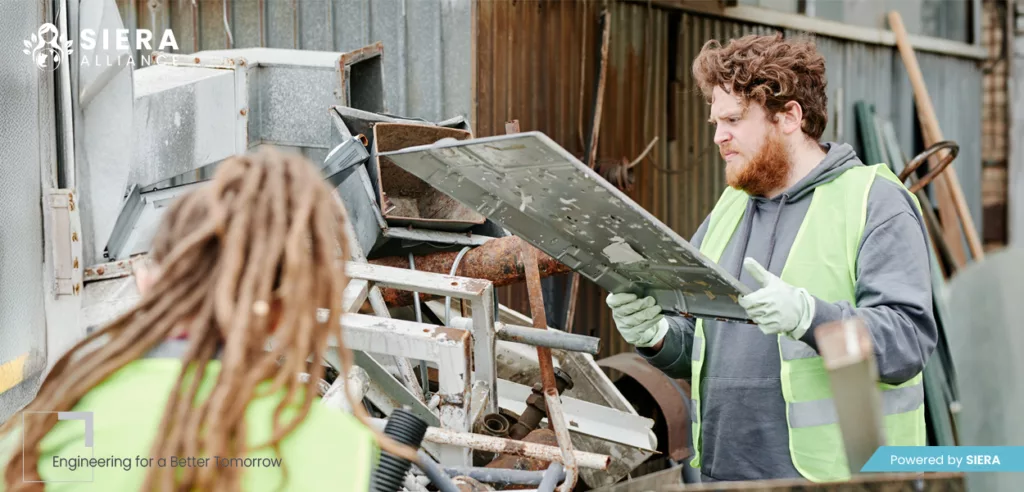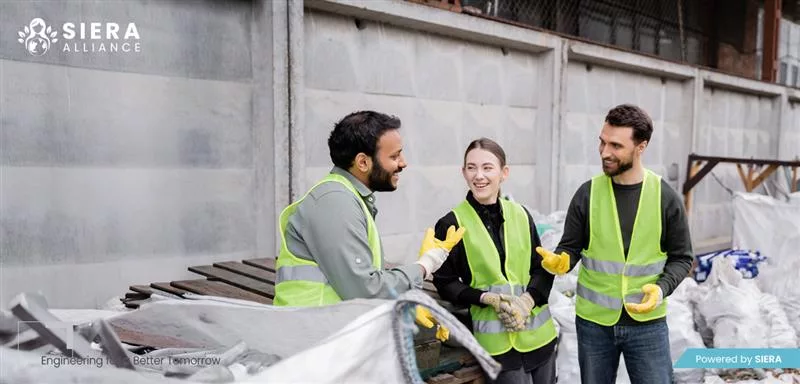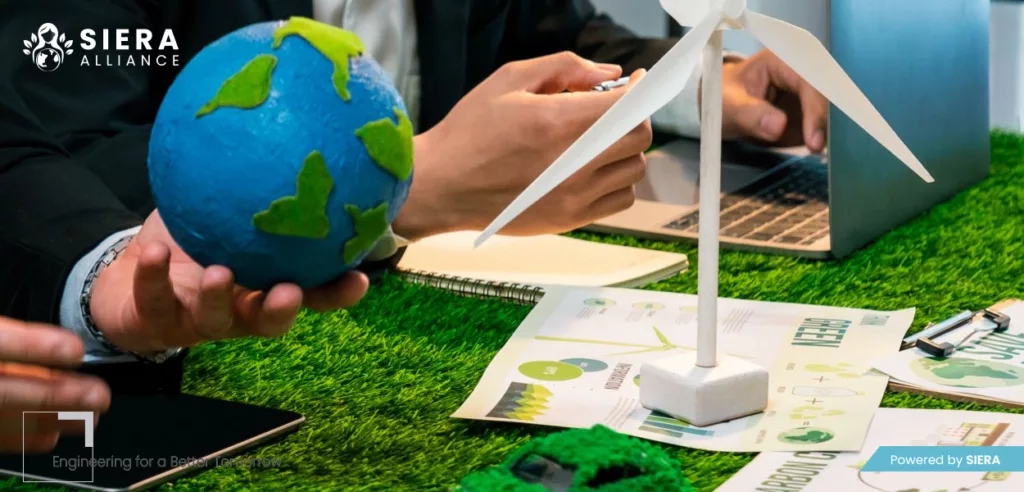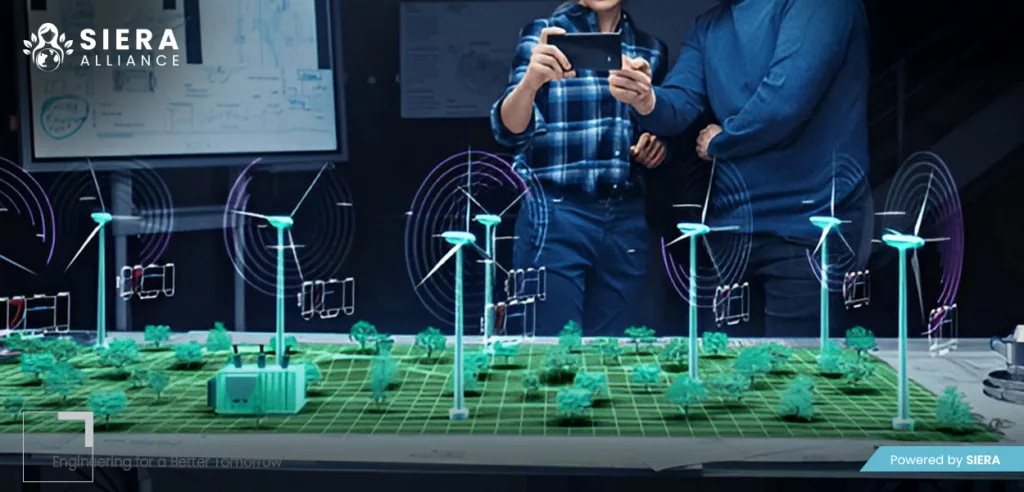Along with being a critical driver of global progress, the construction industry is also one of the biggest contributors to global waste generation. It’s importance to economic growth only makes the need for more sustainable construction practices more urgent, particularly in the domain of waste management.
Creating over 650 million tons of waste annually, the sector accounts for 35% of global waste generation. By adopting effective construction waste management strategies, the industry can significantly reduce its environmental footprint while promoting circular economy principles. This article will delve into some of the key practices, and how they can positively transform the operations of the construction sector.
What is Construction Waste Management?
Construction waste management is a strategic approach which involves the responsible planning, segregation, collection, and disposal of materials that flow into and out of building sites. Its core objectives are to minimize waste sent to landfills, promote material reuse, and facilitate recycling efforts.
Types of Construction Waste
Several types of waste are generated during construction activities, each with its own unique challenges and recycling potential. Below are some common types of construction waste and how they can be managed sustainably:
- Concrete and Rubble Waste: Concrete is used extensively in construction and is among the biggest contributors to the sector’s footprint. However, with the appropriate waste management practices, crushed concrete can be repurposed for use in new projects, thereby conserving natural resources.
- Wood Waste: Timber, plywood, and chipboard contribute significantly to construction waste. Much of this waste can be repurposed for other uses, such as biomass fuel or recycled wood products, reducing the need for virgin materials.
- Drywall Waste: Drywall, a common material in interior construction, generates large amounts of waste. Recycling drywall not only reduces landfill burden but also turns waste into valuable products such as soil amendments for agricultural use.
- Metal Waste: Metals like steel, aluminum, and copper are frequently used in construction. These materials maintain their properties after recycling, making them ideal for reuse in future projects.
- Insulation Waste: Insulation materials such as fiberglass, cellulose, and foam create waste that can be harmful if not disposed of properly. Specialized recycling programs can repurpose these materials, contributing to energy efficiency in future construction.
- Asphalt Waste: Asphalt is a significant byproduct of construction and renovation projects. Recycling asphalt helps reduce reliance on petroleum products and preserves valuable resources.
- Packaging Waste: Construction materials often come with excessive packaging, including cardboard and plastic, which can be recycled to reduce waste.
- Soil and Rock Waste: Soil and rock waste, typically generated during excavation, can be reused for landscaping or land reclamation, effectively reducing the debris sent to landfills.

Construction Site Waste Management Plan
A construction site waste management plan (SWMP) outlines the process for managing waste throughout a project. Though no longer legally required in many regions, a well-structured SWMP is considered a best practice for promoting sustainability and tracking waste reduction efforts. The plan typically includes the following components:
- Identification of potential waste types and sources,
- Designation of appropriate disposal or recycling methods for each waste type,
- Instructions for the segregation and collection of materials,
- Methods for tracking and reporting waste generation and disposal.
The use of SWMPs enhances transparency, improves project footprints and ensures compliance with environmental regulations.
How to Minimize Construction Waste on Site
Effective waste management begins with proactive planning and coordinated execution throughout the project. The following strategies can significantly reduce construction waste and contribute to sustainable practices:
- Plan Ahead: Accurate material estimation is crucial to avoid over-ordering and reduce surplus. Using software tools like Building Information Modeling (BIM) can help project teams forecast material needs more precisely.
- Choose Sustainable Suppliers: Many suppliers offer eco-friendly materials with minimal packaging or bulk delivery options, reducing waste from the outset. Some also accept returns of unused materials, further reducing the footprint of your supply chain.
- Implement a Waste Sorting System: By establishing designated bins for various materials such as wood, metal, and concrete, construction teams can ensure that recyclable materials are separated and sent to the appropriate facilities.
- Repurpose and Reuse Materials: Before discarding materials, consider whether they can be reused on-site or in future projects. Reclaimed wood, bricks, and other materials can be salvaged and repurposed to avoid unnecessary waste.
- Donate Usable Materials: Leftover materials in good condition can be donated to organizations like Habitat for Humanity, keeping valuable resources out of landfills and benefiting local communities.
- Train Workers on Waste Reduction: Regular training sessions on proper handling, storage, and cutting techniques ensure that workers understand the importance of waste reduction and are equipped to implement best practices.
- Use Prefabricated or Modular Construction: Modular and prefabricated construction methods reduce material waste by assembling components in controlled warehouse settings, minimizing on-site waste generation.
- Rent the Right Size Dumpster: Renting an appropriately sized dumpster helps prevent waste overflow and ensures that recyclable materials are not mixed with general waste.
- Compost Organic Waste: Landscaping and demolition projects generate organic waste such as wood chips and plant material. Composting this waste reduces the amount sent to landfills and enriches the soil.

Construction Waste Recycling: Why and How?
A key component of construction waste management is recycling. Materials like concrete, wood, metals, and plastics can all be recycled and reused in new projects, reducing the need for virgin materials, lowering energy consumption, and minimizing the environmental impacts of mining, manufacturing, and construction waste disposal.
The recycling process involves:
- Segregation: Sorting waste materials into separate categories like concrete, wood, metals and plastics is crucial for efficient recycling.
- Collection and Transportation: Recyclable materials are gathered and transported to specialized recycling facilities.
- Processing: At the recycling facility, materials are cleaned, crushed or melted for reuse.
- Reuse: Processed materials are reintroduced into the construction supply chain for new projects.
Benefits of Recycling Construction Waste
- Environmental Benefits: Reduces landfill waste, conserves natural resources and lowers greenhouse gas emissions.
- Economic Benefits: Reduces construction waste disposal costs, generates revenue from recycled materials and enhances project efficiency.
- Social Benefits: Creates jobs in recycling sectors, promotes public health and encourages sustainable development.
Conclusion: Achieving Sustainable Construction Waste Management
Effective construction waste management is not only about compliance; it’s a smart business strategy. By reducing waste, recycling materials and adopting sustainable practices, construction projects can save costs and improve operational efficiency, all while contributing to a greener, more sustainable industry.
SIERA Alliance is committed to promoting responsible construction waste management, driving innovation in recycling practices, and fostering the transition toward a circular economy. By integrating these strategies into every stage of the construction process, we can create a more sustainable built environment, reduce environmental impacts, and support the long-term health of our planet.











